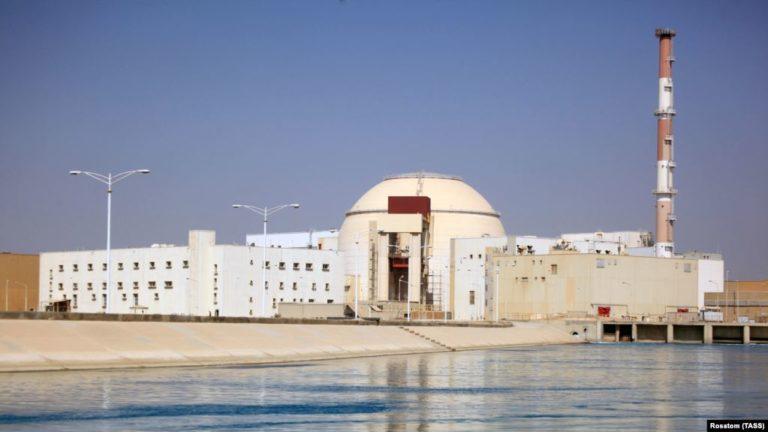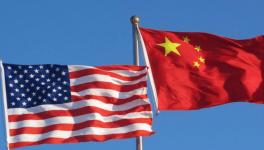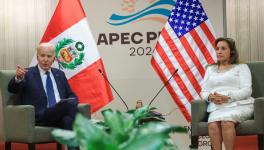Iran’s Shock Therapy Breaks JCPOA Stalemate

Iran’s enriched uranium to fuel its nuclear power plant in Bushehr (file photo)
A series of announcements in Tehran through the past week took the situation around the 2015 Iran nuclear deal (known as the JCPOA) — and the US-Iranian standoff — to an inflection point.
On July 1, it transpired that Iran has exceeded the limit of enriched uranium stockpile under the JCPOA, which is 300 tons. On July 8, Tehran announced a rollback in its obligations under the JCPOA by starting to enrich uranium to a higher purity than 3.67% that would fulfil the needs of its power plants. (Iran had previously said that it needed 5% enrichment for its Bushehr Nuclear Power Plant (NPP) and 20% for Tehran research reactor.)
A criticality has been reached. The Iranian Foreign Ministry’s Fact Sheet outlines how this came about.
Tehran has characterised the past week’s moves as remedial steps under Para 36 of the JCPOA, which it is entitled, to protect its interests. Tehran also says these are reversible steps if only the E3 (Britain, France and Germany) comply with the JCPOA.
Tehran has forewarned that every 60 days, it might otherwise make further moves to jettison its commitments under the JCPOA. Nonetheless, Tehran also acknowledges that although the E3 are yet to meet Iran’s demands, especially in regard of a non-dollar direct payment channel known as INSTEX, certain efforts in that direction are continuing, and they could still bear fruit.
Equally, talks are going on with China and the UK regarding the redesign of Arak reactor (which the US had originally undertaken to carry out under the JCPOA) although Iran has the technology to redesign the reactor on its own if these talks do not show results.
All in all, Tehran has taken certain modest steps that do not even remotely amount to a surreptitious dash for nuclear weapons. On the contrary, these moves are transparent and there is no attempt to restrict the IAEA inspectors’ access to Iran’s nuclear facilities. Nor is Tehran challenging the IAEA intrusive safeguards.
This is crucial. In sum, Tehran has given a two-fold signal. One, the costs for the US’‘maximum pressure’ policy is going to steadily rise, as Tehran will steadily counter-escalate. Two, the remaining signatories to the JCPOA (E3, Russia and China) cannot waffle any longer and must reciprocate Iran’s impeccable compliance with the JCOPA by providing it with an economic lifeline.
Again, there is a hidden message too. Much as Iran is inch by inch distancing itself from the JCOPA — although reluctantly and with caveats — it is not conspiring to kill the 2015 deal. Curiously, Iran’s principal drive still is to somehow bring the US back into the JCPOA. And Tehran takes seriously Trump’s stated aversion to war.
The bottom line, therefore, remains where it was: Does Trump administration have the intellectual capacity and sensitivity to fathom the Iranian (Persian) culture and psyche? Does it get the point that Iranians never negotiate under threats?
The good part, paradoxically, is that Trump has overplayed his cards and is left with few options today aside a military strike that would have incalculable and catastrophic consequences. The US’ maximum pressure strategy has effectively driven Iran to the pre-2015 position. On the other hand, the regime-change project piloted uttered by National Security Advisor John Bolton and extravagantly funded by the State Department have all flopped.
There is no sign of an uprising in Iran against the authorities. Of course, there is dissent within Iran, but then, it was always there and will always be there — but is far from life-threatening for the regime.
Unfortunately, it is being overlooked that the negotiations leading to the 2015 deal were only possible after the US unequivocally jettisoned the ‘regime change’ agenda towards Iran and, secondly, after the US conceded that Iran shall have the right to enrich uranium like any non-weapon member state of Nuclear Non-Proliferation Treaty.
That is to say, if President Trump is serious about negotiating with Tehran, he needs to abandon the ‘maximum pressure’ approach by at least freezing the escalation ladder and offering economic reprieve by suspending some of the sanctions. One way could be by allowing the INSTEX — Europe’s trade channel for doing business with Iran despite US sanctions — to become really functional in the coming days. Trump can do this if he wants to, by simply feigning indifference to the INSTEX providing the mechanism for European, Russian, Turkish, Chinese or Indian companies to resume trading activities with Iran.
This brings us to the phone conversation between French President Emmanuel Macron and Iranian President Hassan Rouhani on Saturday. For sure, Macron is acting as an intermediary between Trump and Rouhani to facilitate negotiations. The French have clarified that there is no move to trigger the nuclear deal’s dispute resolution mechanism for now — “It’s not an option at this moment” — although Macron said Tehran’s announcement on Sunday amounted to a ‘violation’ of the JCPOA.
Hectic behind-the-scenes consultations are taking place even as an emergency meeting of the IAEA is scheduled in Vienna on Wednesday at US request. Iran’s cooperation with the highly intrusive IAEA inspections of its nuclear facilities is the focal point. Iran will attend the meeting.
Macron sounded out Rouhani on Saturday about American officials being present during the future talks between Iran and the remaining parties to the JCPOA — ‘4+1’ (China, Russia, Britain, France and Germany). Rouhani concurred with the rider that it shouldn’t mean re-negotiation of the JCPOA. He added that Tehran will not object to the US participation in 4+1 meetings, provided the Trump administration removes the sanctions.
The chances are that these high-level exchanges and discussions on new ideas and initiatives may open the door to the pathway leading to the formation of new talks involving the US and Iran.
Get the latest reports & analysis with people's perspective on Protests, movements & deep analytical videos, discussions of the current affairs in your Telegram app. Subscribe to NewsClick's Telegram channel & get Real-Time updates on stories, as they get published on our website.























